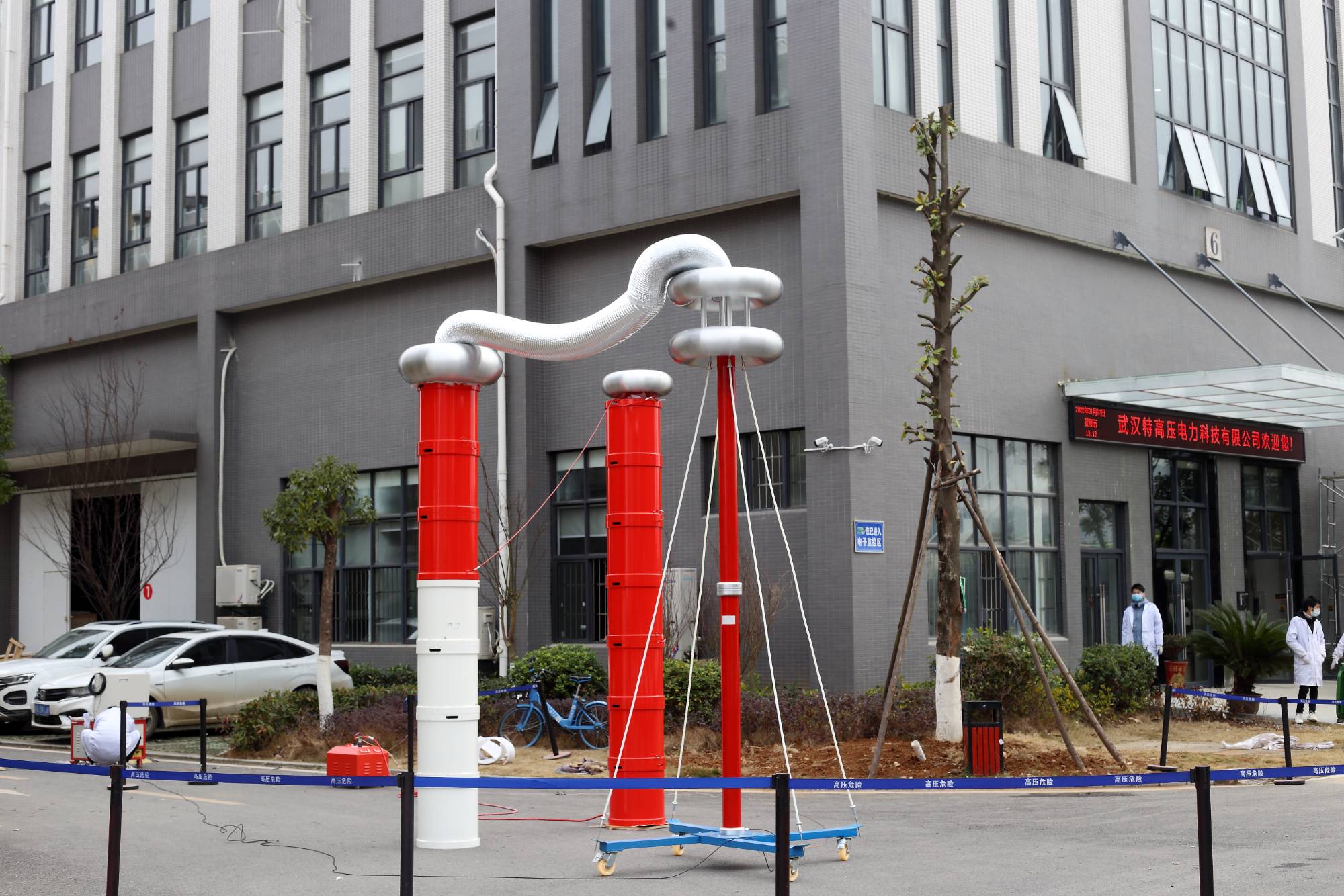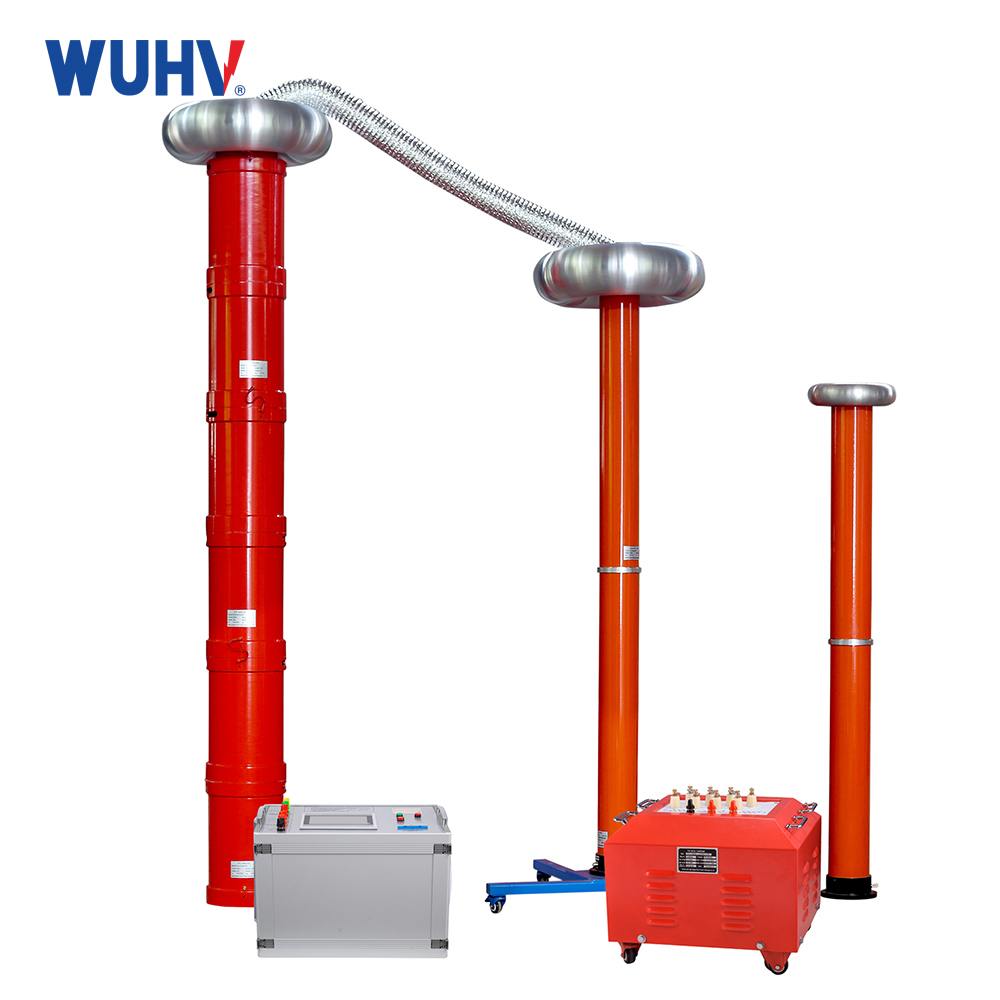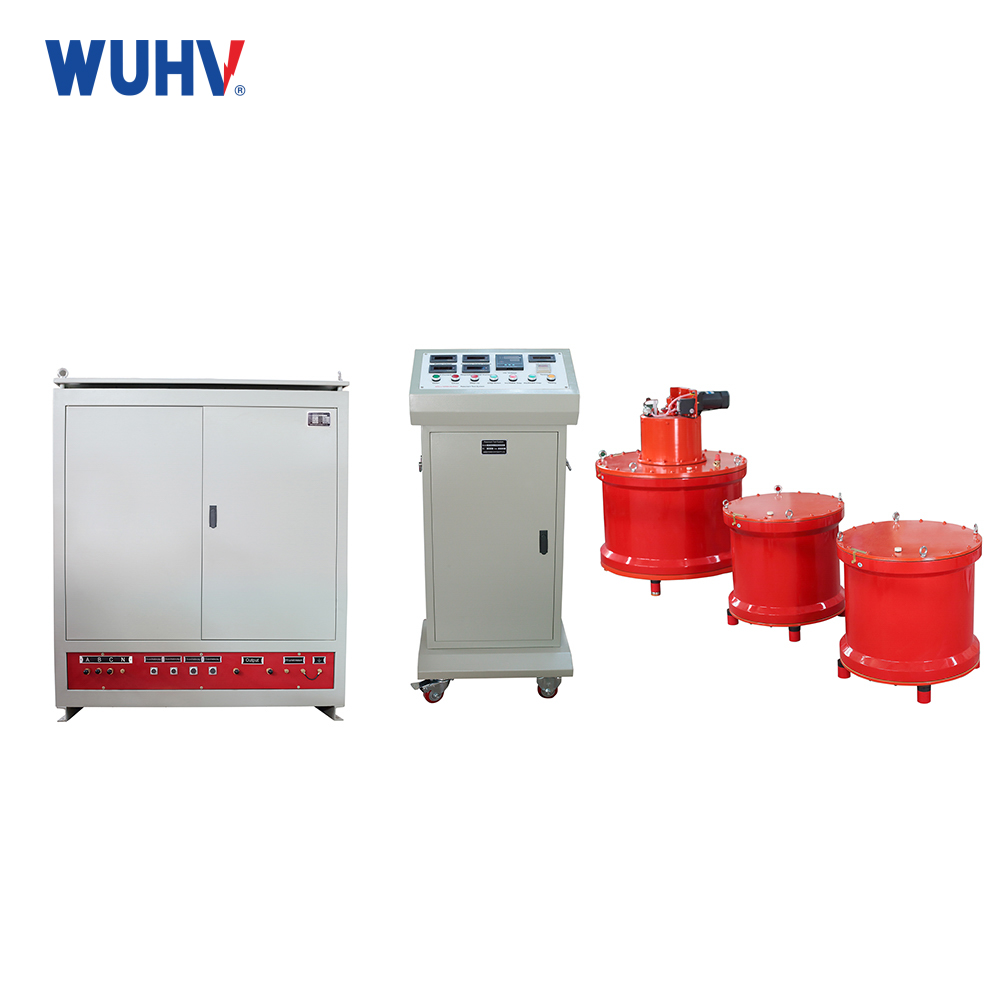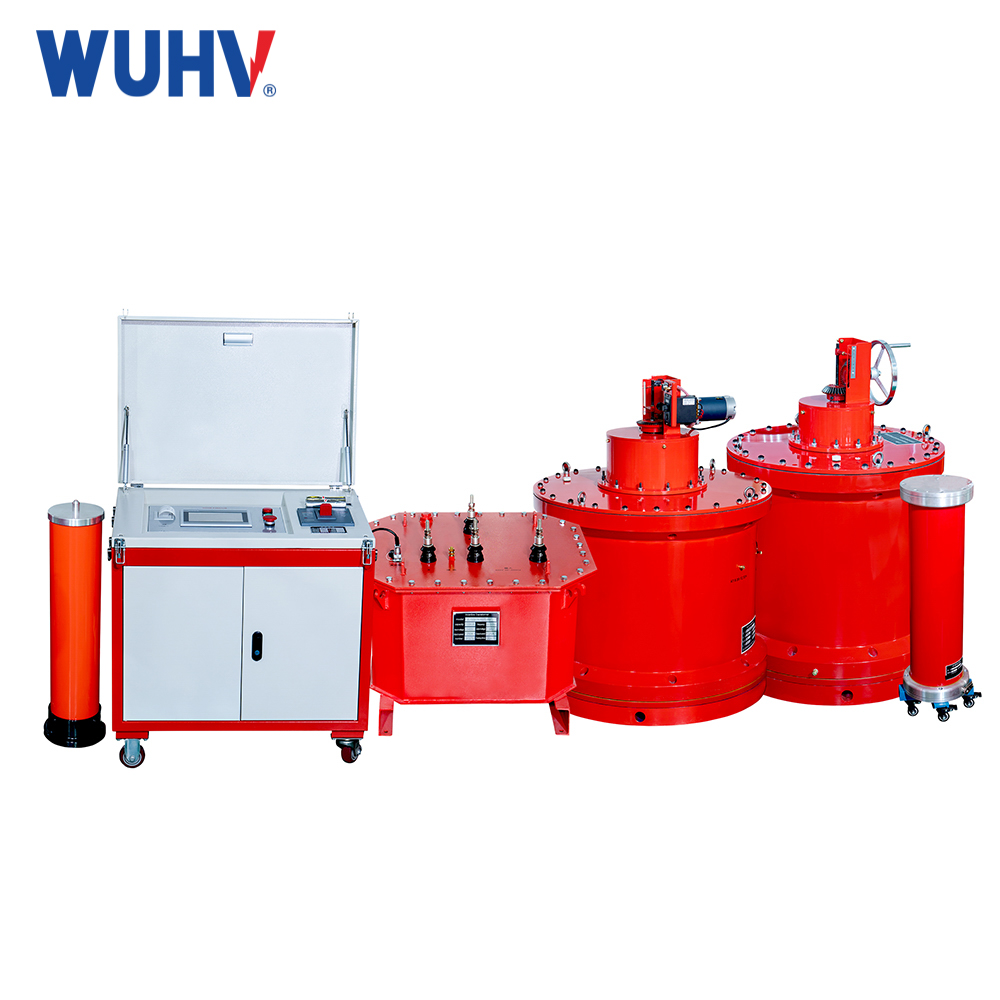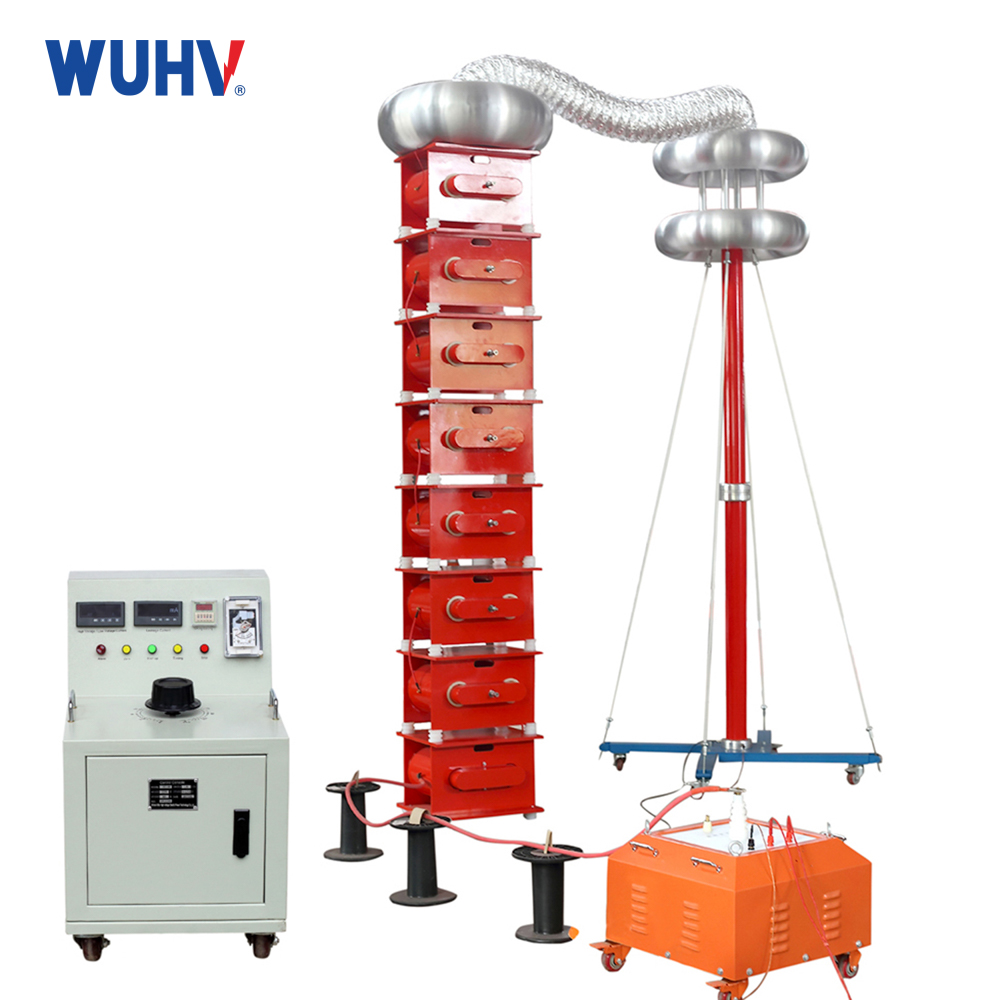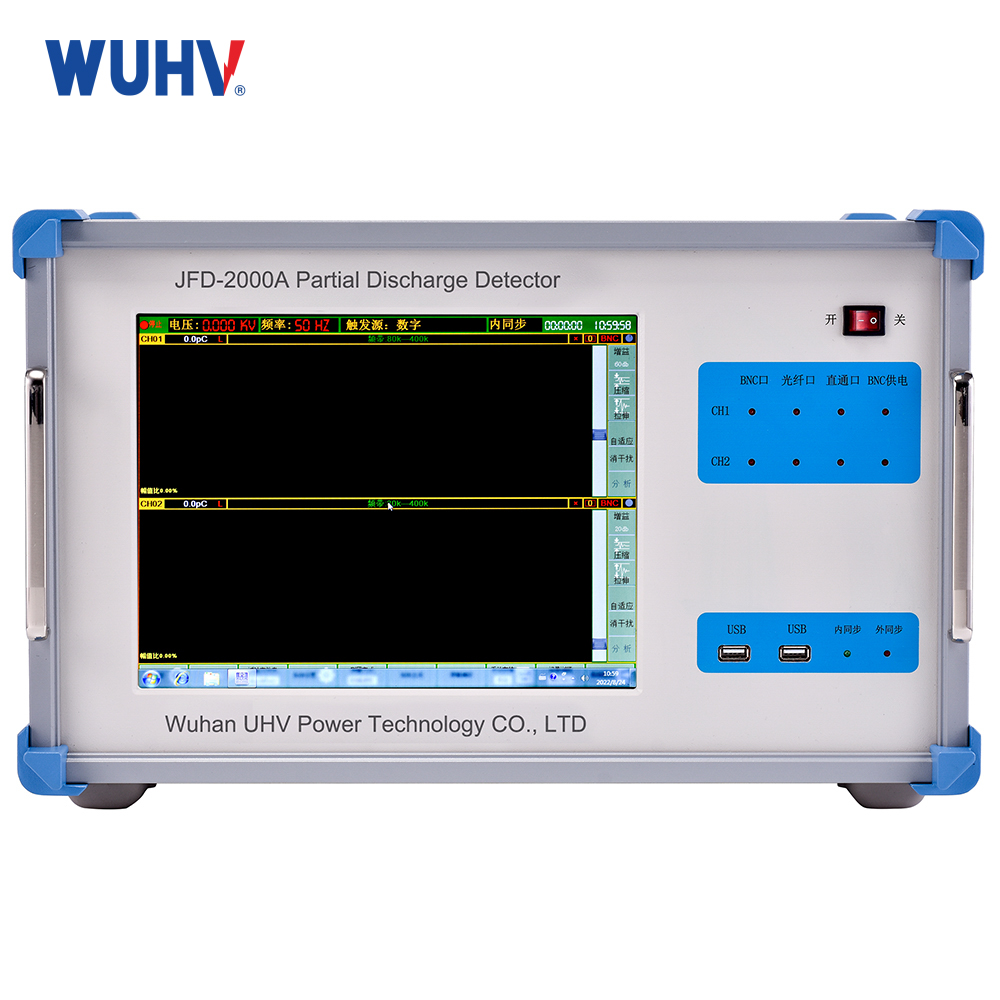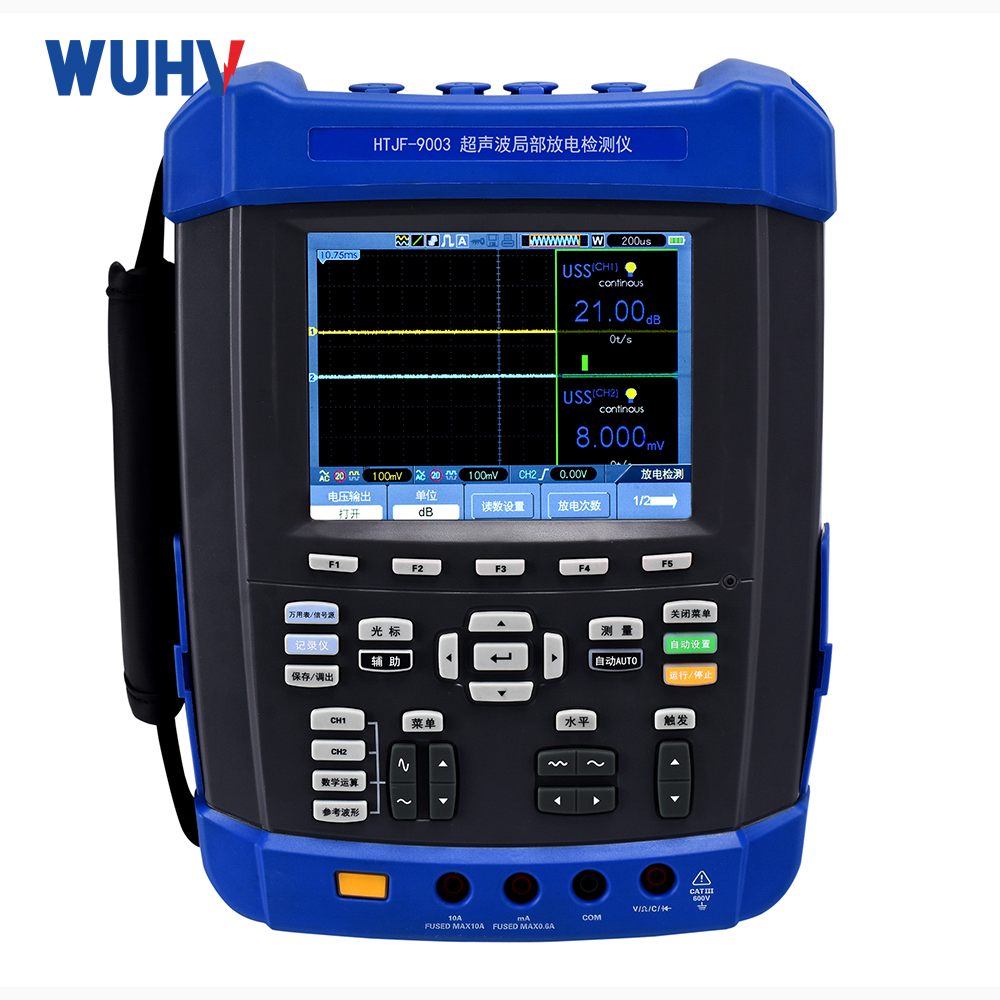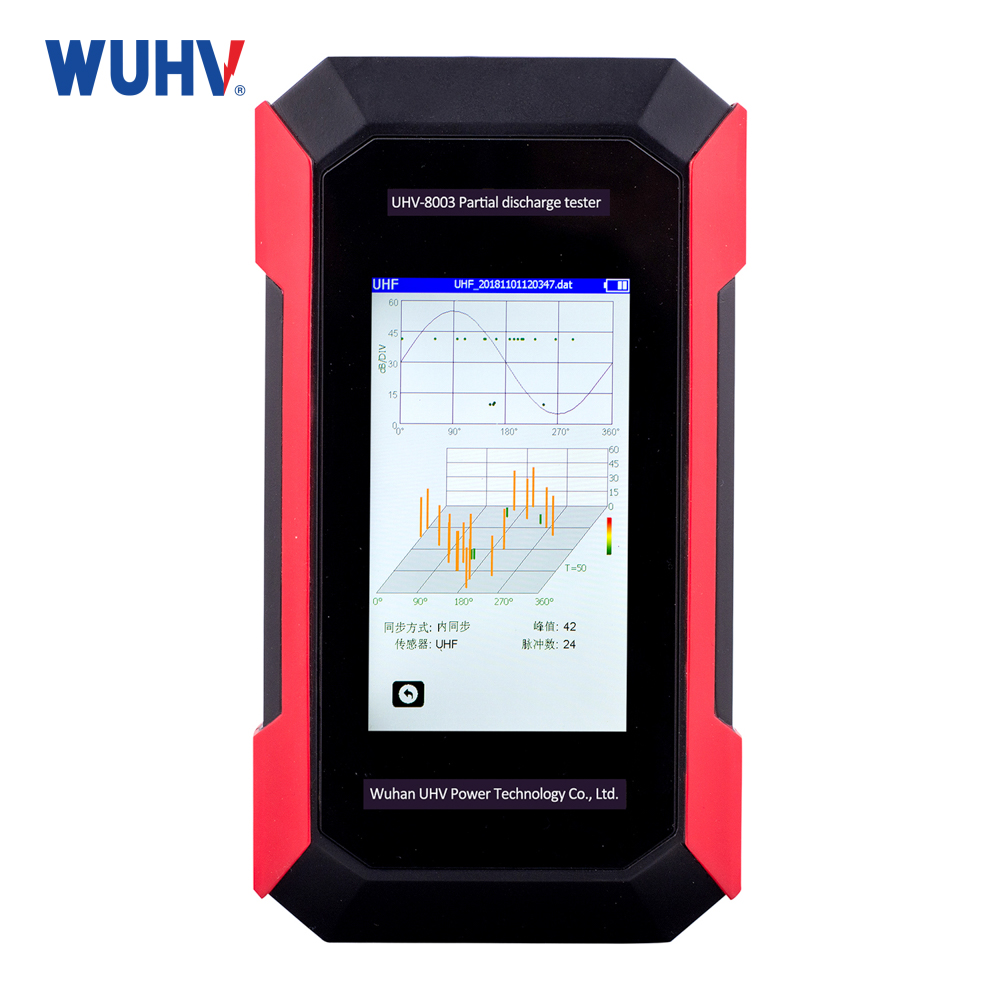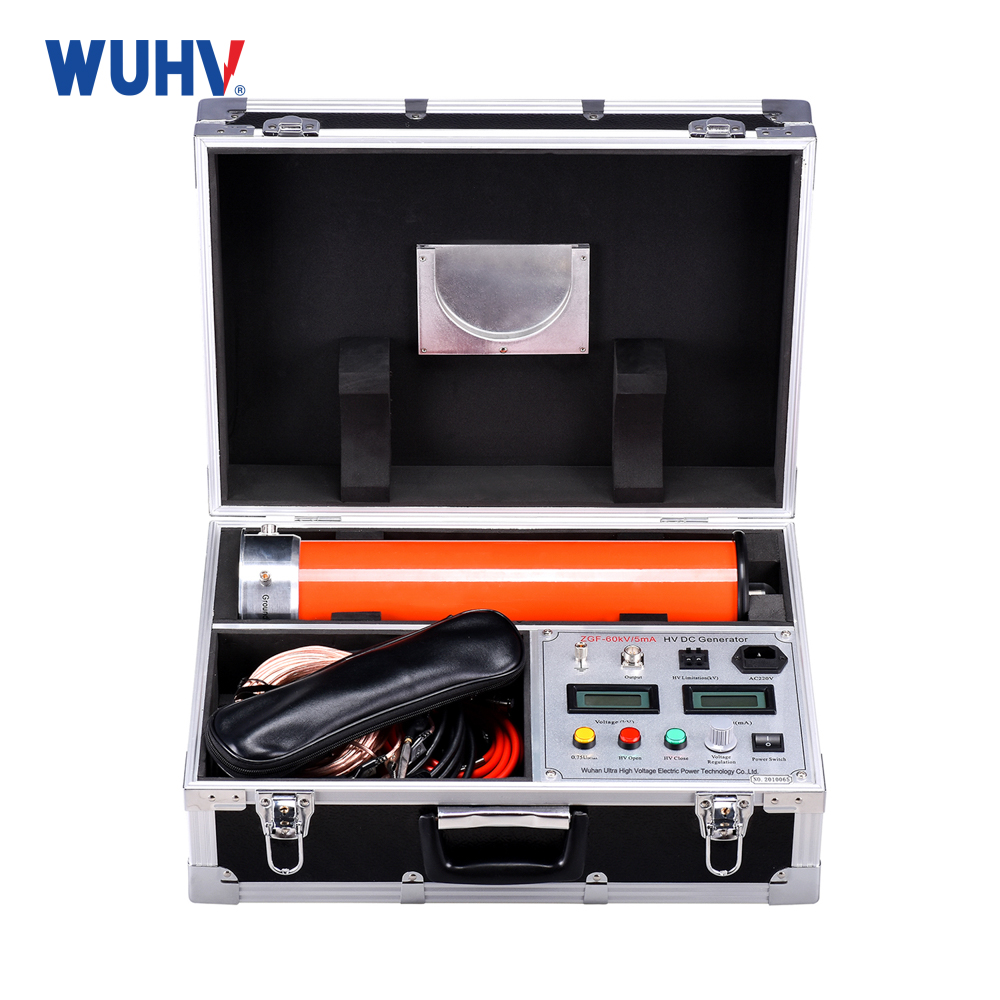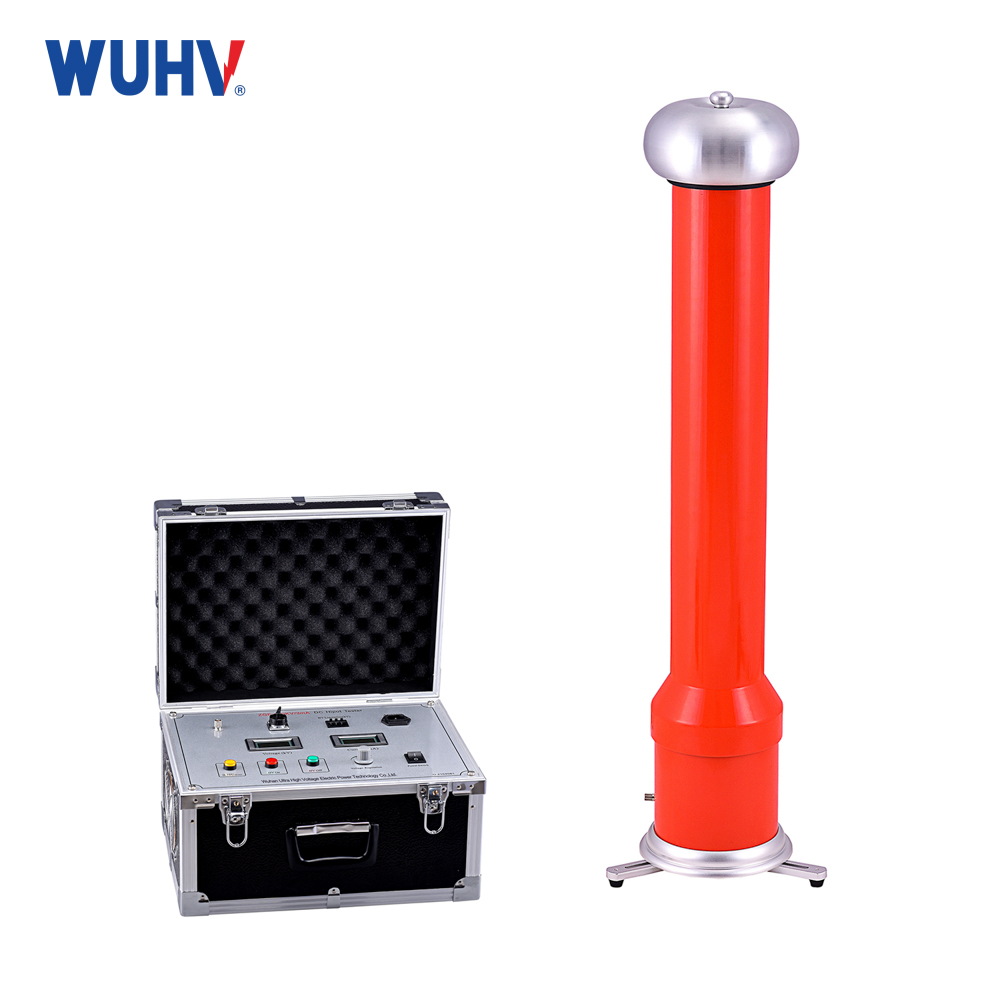1. Introduction
Series resonant devices are widely used in on-site AC withstand voltage testing of large capacity test objects such as transformers and capacitors. Several factors affecting factor quality q in series resonant withstand voltage tests were analyzed to address common issues in practical applications.
2. Capacity of the test object
The q-value is the most important parameter for evaluating a series resonant circuit. It is proportional to the power frequency f and inductance L of the high-voltage capacitor, and inversely proportional to the impedance R, where R represents the active loss of the entire circuit. In the actual power frequency series resonance test circuit, according to the formula wl=l/wc, it can be concluded that the capacitance reactance determines the inductance reactance.
However, Q = wL / R。 If the test object is GIS or equipment composed of independent components, voltage withstand testing can be carried out in sections to improve capacitance and obtain higher q values. Using a frequency conversion resonant device, the test object has a larger capacity and a lower resonant frequency. In most cases, this is helpful for the test object.
3. Equivalent resistance of circuit losses
Regardless of the type of power frequency or frequency conversion resonance device, if the capacity of the test object is fixed or the inductance of the high-voltage reactor is fixed, when the circuit reaches series resonance, wl=l/wc, Then there are:
In the formula: Uout is the output voltage; Uexc is the excitation voltage input based on the above formula, and the only way to increase the q value is to reduce the circuit loss resistance R.
The actual test circuit consists of three parts: a series testing device, high-voltage leads, and the test object. This circuit is mainly composed of high-voltage reactors and test objects in series devices.
3.1 Loss of series resonant device
High voltage reactors mainly determine the active losses of series resonant devices. High voltage reactors have large inductance and low current. Therefore, the DC resistance of the coil can reach ka. It and the iron loss of the reactor constitute an important component of the circuit loss resistance r. For further analysis, we introduce the viewpoint of decomposing the q-value of the entire circuit into its various parts.
Let the circuit q value be Qs, the series resonator q value be QR, and the test object q value be Qi
4. Conclusion
(1) In the series resonance test, there are many factors that affect the q value, including the capacity of the tested object, circuit loss resistance, weather, etc.
(2) Qs is a complex parameter typically determined by QL and QR. However, in field experiments, other factors can also affect Qs, including high-voltage electrodes and high-voltage leads. Especially the corona loss control of high-voltage leads is quite difficult. As the voltage increases, the corona loss in the high-voltage part gradually increases, resulting in a significant decrease in the Qs value. Finally, the output voltage should not saturate and should not increase further.
(3) An effective method to reduce corona losses in the high-voltage section is to add corona rings on the high-voltage electrodes to increase the initial corona field strength of the high-voltage leads. Long diameter precision machined aluminum tubes can be used in the laboratory, and long diameter elastic leads should be used for on-site testing of high-voltage leads. It is not recommended to use bare copper wire.
(4) When the output voltage approaches the nominal value, attention should be paid to the voltage distribution of the reactor.


